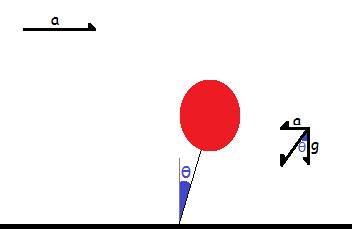It's well known that a helium balloon inside of a car moves forward when the car accelerates, and backward when it slows down. What would happen, though, if a lower density gas was used instead of helium? Would the movement change? Would it stay the same?
One more question: How does the air pressure vary inside the car during acceleration?

